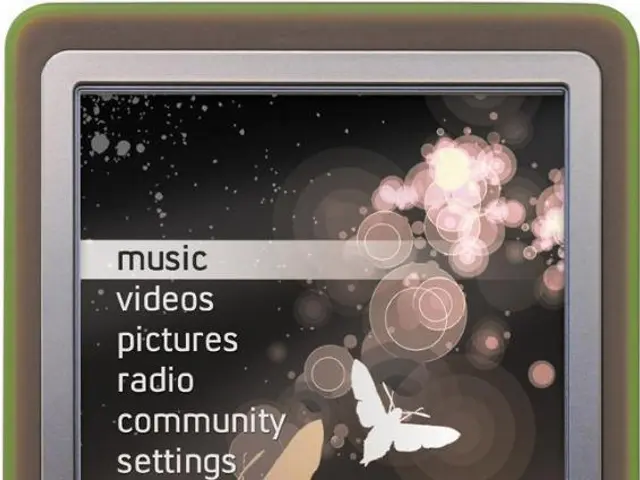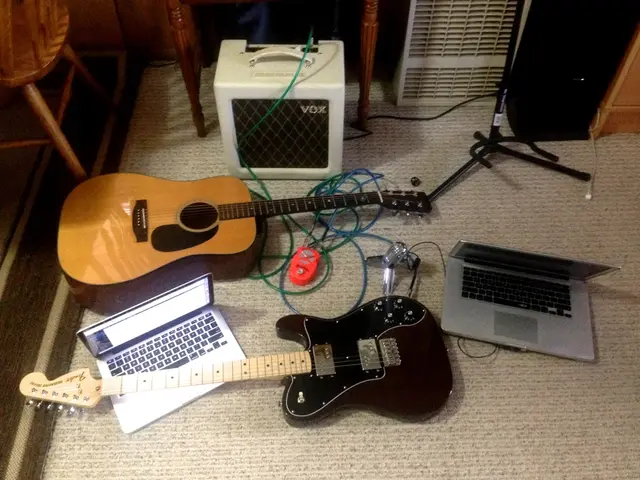Understanding DSD Audio: Function, Workings, File Download Sources, and Additional Info
In the labyrinth of audio formats, DSD, or Direct Stream Digital, is a term you might have encountered, especially if you're a fan of jazz or classical music. However, it's not uncommon to be unacquainted with it. Let's dive into the world of DSD, demystifying its intricacies for you.
First, PCM Explained...
Digital signals, represented by 0s and 1s, need organization to be of any use. Most of the time, this task is carried out by the PCM (Pulse Code Modulation). In a nutshell, PCM describes the original analog music waveform using amplitude (size) and measuring it at regular intervals to ensure proper representation.
What is DSD Audio?
DSD was initially conceived as a method for archiving old analog recordings in the mid-1990s. It's a simpler, space-efficient way of storing digital music data than PCM and is easily convertible to PCM files. Around the same time, Sony and Philips were pioneering the SACD (Super Audio CD) disc, and DSD seemed an excellent foundation for the new format.
How Does DSD Work?
Unlike PCM, DSD uses a single bit of information. This information tells us whether the current sample of the analog waveform is higher or lower than the previous one. Although it may seem restricting compared to the over 65,000 different values 16-bit PCM has, DSD's resolution is made up by the ultra-high sampling rate of over 2.8 million samples per second—64 times the speed of a CD.
Is DSD Hi-Res?
While DSD's dynamic range, around 120dB in the audible frequency range, may not match the theoretical maximum of 24-bit/192kHz PCM (144dB), it still offers impressive resolution and sound quality. One could argue the bigger numbers are impressive, but it's important to remember that even the range of CD (96dB) is considered more than enough to cope with any recording[1].
How Do You Play DSD?
DSD playback is now more common in digital equipment, primarily due to the growing availability of downloadable music files. To play DSD files, ensure your portable music player, music streamer, or DAC is compatible with the format. Most mid-to-high-end digital playback equipment should be compatible, treating DSD files similarly to FLAC or WAV files[5].
Where Can You Buy DSD Audio Files?
Although hi-res download sites are less common today, DSD downloads are still available on sites like HDTracks and Native DSD. Additionally, if you prefer physical formats and have a compatible disc player, SACDs are still available[6].
Where can you listen to DSD music?
You can listen to DSD music using devices such as DACs (Digital-to-Analog Converters) and SACD players. Many music streamers and high-end portable music players support DSD playback[2].
When did DSD launch?
DSD was first introduced in the mid-1990s, primarily as a means for archiving analog recordings[4].
Is DSD better?
The ongoing debate about whether DSD is better than PCM often comes down to personal preference. Some argue that DSD offers superior sound quality, while others believe that PCM is more universally compatible[5]. However, it's crucial to consider both the hardware requirements and file size limitations associated with DSD[3][4].
Bonus Info
Top HI-RES Audiophile Music Download Sites - Search for stunning high-resolution audio files from these popular sites:- HD Tracks- NativeDSD
15 EXCLUSIVE HI-RES ALBUM DOWNLOADS TO TEST YOUR HIFI SYSTEM - Discover an exceptional blend of music genres and enjoy breathtaking sonic performances.
BEST PORTABLE MUSIC PLAYERS, STREAMERS, AND DACs - Explore our top picks for devices that support DSD playback, ensuring an exceptional audio experience.
- If you're searching for hi-fi audio, you might consider buying DSD music files from sites like HDTracks or NativeDSD.
- To listen to DSD music, you'll need a compatible device such as a Digital-to-Analog Converter (DAC), a SACD player, or a music streamer/high-end portable music player that supports DSD playback.
- Initially conceived in the mid-1990s as a method for archiving old analog recordings, DSD has since become a format used in the SACD (Super Audio CD) disc.
- DSD's resolution, around 120dB in the audible frequency range, may not match the theoretical maximum of 24-bit/192kHz PCM (144dB), but it still offers impressive sound quality.
- Unlike PCM, which uses multiple bits to represent an analog music waveform, DSD uses a single bit to determine whether the current sample is higher or lower than the previous one, achieving high resolution through an ultra-high sampling rate of over 2.8 million samples per second.
- DSD was initially designed as a simpler, space-efficient way of storing digital music data compared to PCM, and it's still easily convertible to PCM files.








